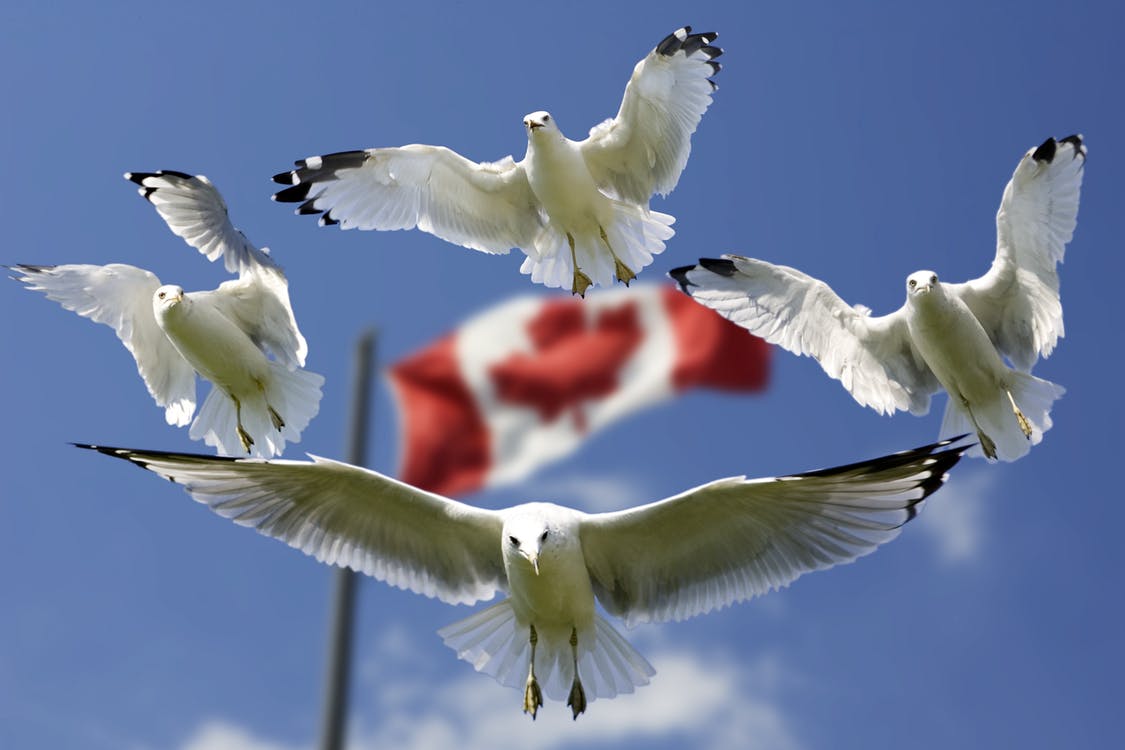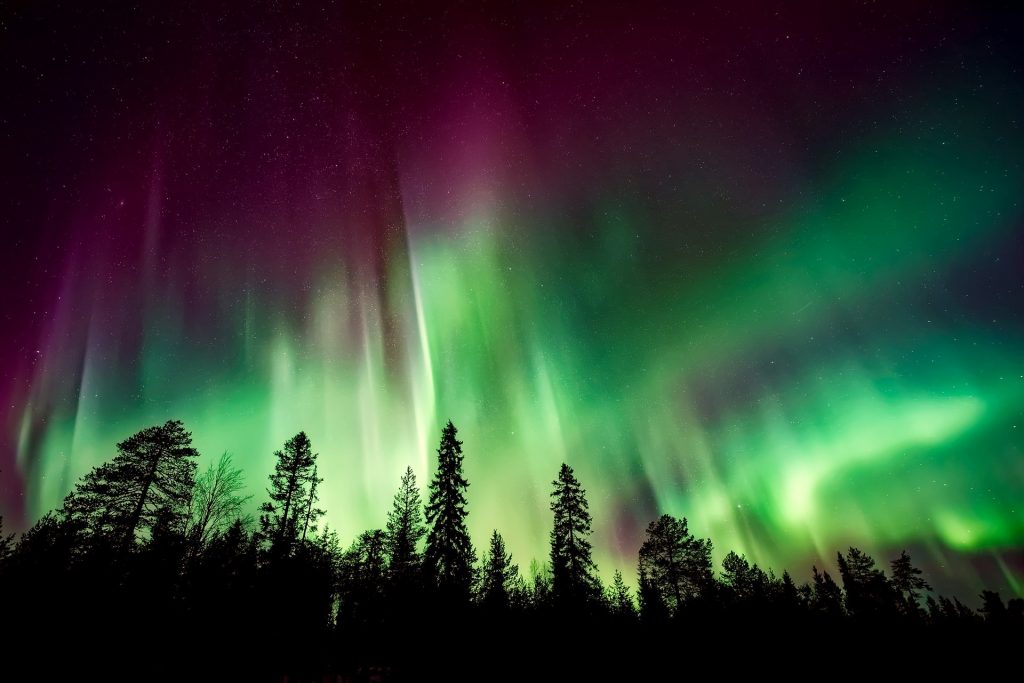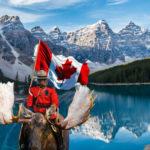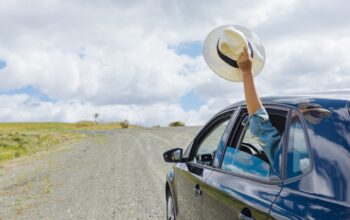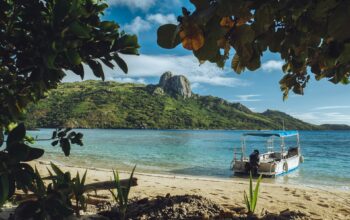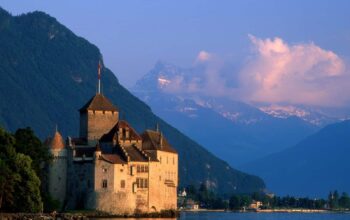Everybody knows Canada is a beautiful work of art, with its picturesque landscapes, massive forests and stunning views, and don’t get me started about the jaw-dropping, breathtaking Northern Lights – what a sight to behold!
We also know that famous stereotype that dictates that Canadians are ridiculously nice, which we’ve seen many times, is a stereotype that is not so easy to debunk.
Yet what most of us might not know are the rather strange, quirky things about this country and its people, like perhaps when a Canadian man was arrested in 2015 for tying more than 100 balloons to a garden chair and flying over the city of Calgary for instance!
For this reason, here’s a list of random strange, fun and interesting facts you might want to know especially if you’re planning on travelling to Canada any time soon!
1. Canada is not only a massive country, but is also known to have massive things
Apologies if the title doesn’t make much sense, but you’ll very soon understand what I mean. Are you ready for the numbers?
Canada:
- Is the second largest country in the world after Russia
- Has more lakes than the rest of the world’s combined
- Has the largest coastline – that’s about 202,080 km (125,567 miles) of coastline to be exact
- Is the country with the largest water area in the world
Pretty impressive right? Although, when it comes to its population, Canada has fewer people than the Tokyo metropolitan area, which coming to think about it, is actually a good thing; more space for everyone!
2. Canada and Denmark have been fighting over an uninhabited island with “whiskey”
Long ago, in the early 19th century, started the long-going debate surrounding Hans Island, a small, desolate island in the middle of 22-mile wide Nares Strait that separates Greenland (an autonomous territory of Denmark) from Canada.
Since international law states that all countries have the right to claim territory within 12 miles of their shore, both Canada and Denmark were in a position to claim the island since it is technically located in both Canadian and Danish waters.
In 1933, the Permanent Court of International Justice of the League of Nations decided that the island should be Danish territory. However, the League of Nations soon fell apart, and with it the right to claim the island belonged to Denmark. The LN was then replaced by the United Nations, which did not really give much importance to the status of the island.
The issue only continued to die down, as there arose bigger problems to think about, mainly Word War II and the Cold War. The status of the island emerged again decades later, when in 1984, Denmark’s Minister of Greenland Affairs visited the island and planted a Danish flag, leaving a bottle of brandy and a note at the base of the flag which read, “Welcome to the Danish island”.
Canada’s response was of course to change the flag, leave a bottle of Canadian Club and a sign saying ‘Welcome to Canada’. For the decades to come, both countries would change each other’s flags and leave each other bottles of alcohol, like two kids fighting over a bar of chocolate.
This is how it came to be known as the famous “whiskey war”, a war waged in good sense of humour of course, although there might soon be an end to it as there seems to be a plan in the pipeline for both countries to enjoy shared territory of Hans Island!
3. Canadians Have Been Prepared For The Arrival Of Aliens since 1967
What’s the point of speculating about the arrival aliens, and shooting countless movies about them, but then not be prepared for their arrival? That’s right, we’re referring to you America!
Canada, on the other hand, knows what it’s doing. It was the first in the world to build a UFO landing pad in St. Paul, Alberta.
Take that America!
4. Gambling Laws in Canada are More Than Slightly Complex
When it comes to betting and gambling in Canada, as in many other countries, gambling laws are a bit complicated.
On the one hand, betting and gambling are some of the most popular entertainment activities in Canada, with places such as Edmonton, the capital of Alberta province, making a name for itself for being one of the top destinations for gamers.
There are also many popular casinos such as Northlands Park Racetrack & Casino, which is the official home of the Canadian Derby, the Edmonton EXPO Centre, Casino Edmonton and Casino de Montréal, one of Canada’s finest Casinos.
On the other hand, when it comes to Online Casinos in Canada, the situation gets a bit complicated. This is because, while it is legal for players to gamble, it is illegal for companies to operate online casinos and poker rooms from Canada. Yet this again, seems to be true only to a certain degree, as most offshore gaming servers are located on the Kahnawake native reserve, which is technically still on the territory of the country.
Yet regardless of this little conundrum, there’s no arguing about Canada being at the top of attractive gaming environments for both residents and foreigners.
5. Playing Cards were once used as currency
Part of what we know today as Canada, was actually known as “New France” up until 1763. During that time, their coins were pretty scarce, so much that people hoarded these coins for fear that they vanish as they did in other countries. However, this was not always possible as manufactured products from France had to be bought with coins.
These coins were often sent at great expenses and used to leave the country by the same boat on which they came. Then, in 1685, the situation got worse when the annual boat that used to bring coins and other goods, reached Canada 8 months late! The governor tried to come up with various ways and means possible to help the soldiers like feeding them on credit and letting them work for peasants, until he ultimately came up with a “brilliant idea”.
He ordered that all decks of playing cards in the colony be brought to him, to be each cut in quarters, signed, stamped and assigned a monetary value in writing.
These cards would there on be used as payment for anything on sale in the colony. This went on until with each and every boat that came and went, all cards were exchanged with coins, till everything returned to normal.
6. Canada’s lowest recorded temperature is as cold as Mars
If you’re not friends with the cold, or live on a warm Mediterranean island blessed with sun and sea, and plan on visiting Canada, you better go off on a shopping spree to gear up for the country’s ridiculously cold weather. You probably know this already, or have seen countless video clips circulating the internet of someone having to chisel their car out of a block of ice, or have perhaps heard about the extremely low temperatures engulfing the country in December of last year with temperatures stretching to -40 °C with wind chills.
However, what you might not know is that the lowest recorded temperature in Canada is -63 C (-81.4 F), which was recorded in Yukon on Feb. 3, 1947. This temperature is roughly the same as the surface of Mars!
So if you’re planning a holiday in the cold winter months, and don’t want to end up like a popsicle in the middle of the street, make sure to prepare yourself with ten layers of clothing, double socks, insulated jacket, and a thick pair of boots to beat the snow.
7. Canadians would kill for doughnuts
Just kidding! However, we’re not joking about Canadians loving doughnuts! Not only does the country consume the most doughnuts, but in order to make sure that its people don’t have to go out of their way for a box of doughnuts, Canada also made sure to have the most doughnut shops per capita of any country in the world!
Even though the rate of consumption has declined over the years especially since its peak in 2010, doughnuts still hold the 11th place on the list of food items consumed out of home or from restaurants in Canada. Therefore, by the looks of it, doughnuts remain a baked delicacy enjoyed by all Canadians.
8. Churchill residents leave their cars unlocked for pedestrians in danger
If not even in a million worlds, would you have imagined of leaving your car unlocked, in this little town on the west shore of Hudson Bay, it is a standard to leave cars unlocked for pedestrians encountering bears.
A good thing to know if you’re planning on a trip up North, you never know when you might end up running away from a bear!
Also, did we mention that there’s a polar bear prison in Churchill? Due to the increased encounters of polar bears with humans during their migration, this town is being proactive by capturing bears that are difficult to send away and locking them behind bars with only water and no food. Then, after 30 days have elapsed, the polar bears are flown away by helicopter and dropped off on ice.
The idea is of course to safeguard the people of this town from polar bear attacks, but also to ensure that the polar bear population doesn’t continue to decline due to killings. Not bad Canada, not bad!
9. Canadians Say Way Too Many “Sorrys”
It’s one thing continuously hearing about how Canadians are so unnecessarily apologetic, but it’s a completely other thing when a new law is passed as a consequence, in order to protect people in court.
Due to the overuse of the word “sorry”, in 2009 The Apology Act was passed in order to make apologies inadmissible in court lest an innocent person is sent to jail. Since in most cases, lawyers would be able to swing the verdict in their favour if they can prove that the other person apologized at the time of the incident, and everyone in Canada apologises whether they’re at fault or not, this law was needed to stipulate that an apology of any kind is an expression of “sympathy or regret”, rather than “guilt or liability”.
Just when you think you’ve heard it all!
Related Posts
Love traveling.
